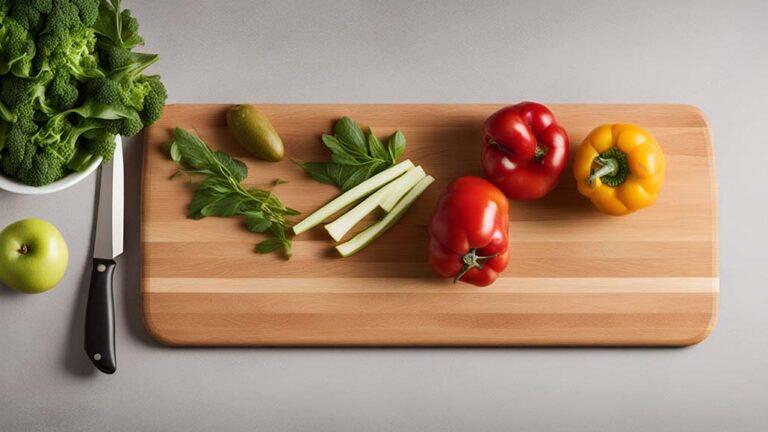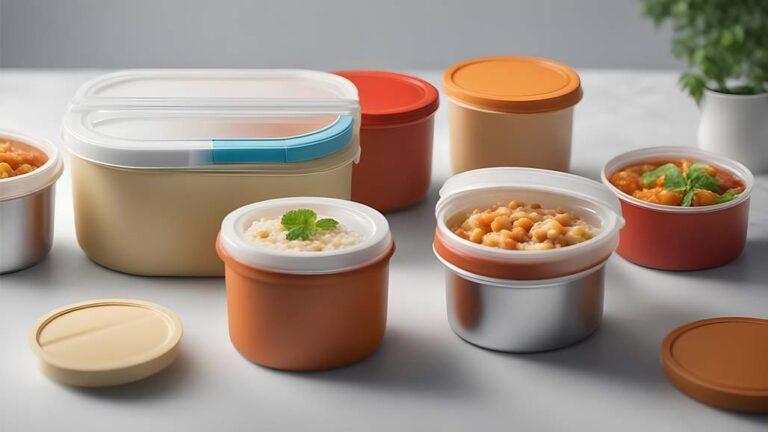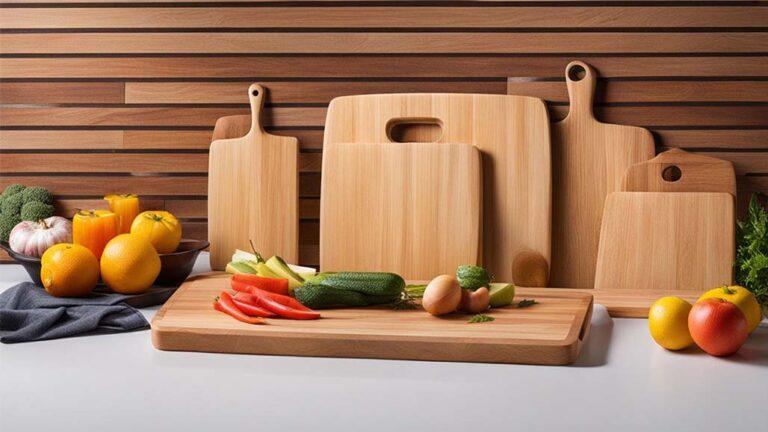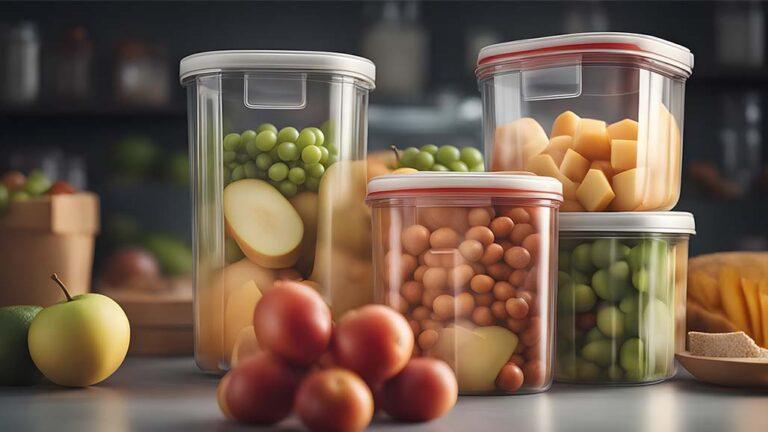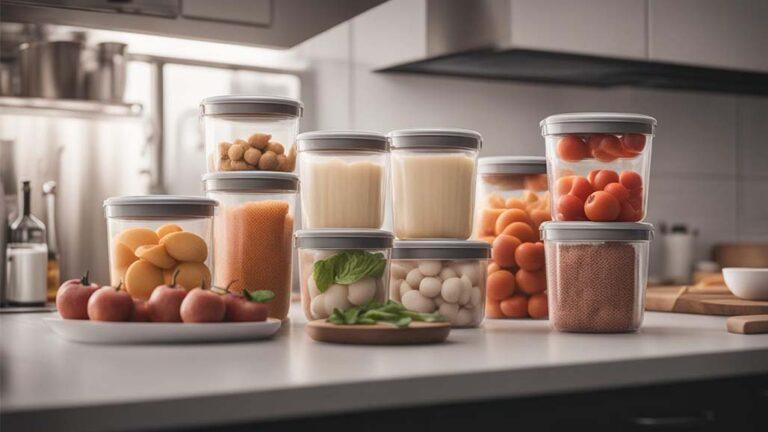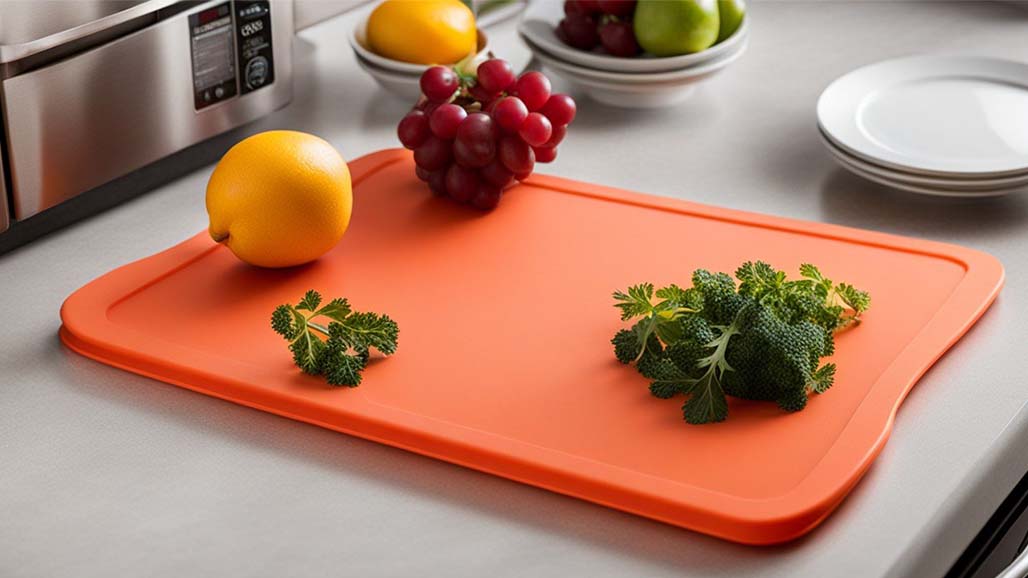
Introduction
Are hard plastic cutting boards dishwasher safe? This seemingly straightforward query conceals a plethora of factors that may affect both the durability of your cutting board and, possibly, your health. The advantages of using hard plastic cutting boards, the dangers of putting them in the dishwasher, how to clean and take care of them, and when to replace them are all covered in this extensive guide. Let’s cut through the layers of knowledge to learn how to effectively care for your reliable kitchen partner.
Benefits of Using a Hard Plastic Cutting Board
Hard plastic cutting boards have gained popularity in kitchens worldwide for several good reasons. Here are a few of the main advantages:
Durability: Hard plastic cutting boards are built to last. They can withstand the daily wear and tear of chopping, slicing, and dicing without showing signs of wear as quickly as other materials.
- Hygiene: Plastic cutting boards are generally easier to clean than wooden boards. They can be more effectively sanitized, reducing the risk of cross-contamination.
- Affordability: Plastic cutting boards are often more budget-friendly than their wooden or stone counterparts, making them an accessible choice for many households.
- Variety: Plastic cutting boards come in various sizes, shapes, and colors, allowing you to choose one that suits your needs and kitchen decor.
- Knife-Friendly: Compared to harder surfaces like glass or stone, they are less likely to cause your blades to get dull.
After looking at the benefits of using hard plastic cutting boards, it’s time to talk about a very important issue: Can you put them in the dishwasher without harm?
Risks of Putting a Hard Plastic Cutting Board in the Dishwasher
Dishwashers are undoubtedly convenient, but care should be taken when using them with hard plastic cutting boards. There are concerns to consider even though some plastic cutting boards claim to be dishwasher safe:
- Warping: High water temperatures and intense heat in dishwashers can cause plastic cutting boards to warp or deform over time, compromising their flat surface.
- Cracking: The combination of hot water and harsh detergents can lead to the cracking of hard plastic cutting boards, rendering them less effective and potentially unhygienic.
- Bacterial Residue: Dishwashers may not always completely remove food particles and bacteria from the grooves and scratches on the cutting board’s surface, leading to potential cross-contamination issues.
- Reduced Lifespan: Frequent dishwasher use can significantly shorten the lifespan of your plastic cutting board, requiring more frequent replacements.
As a result, even though it can be appealing to throw your plastic cutting board in the dishwasher for a quick clean-up, it’s important to think about the possible long-term effects.
How to Clean and Care for a Hard Plastic Cutting Board
Now that we have discussed the risks of using a dishwasher let’s explore the best practices for cleaning and caring for your hard plastic cutting board.
- Hand Wash with Warm, Soapy Water: The most effective way to clean a plastic cutting board is by hand. Use warm water and mild dish soap to thoroughly wash both sides and all edges of the board.
- Sanitization: After washing sanitize the board with a mixture of one tablespoon of bleach per gallon of water. Allow it to air dry or pat it dry with a clean paper towel.
- Avoid Using Harsh Chemicals: To protect the surface and integrity of your plastic cutting board, avoid using harsh chemicals or abrasive scouring pads on it.
- Regular Inspection: Check your cutting board sometimes for wear indicators such as deep scratches, warping, or cracks. It could be time to replace the board if any problems are found.
- Cutting Board Oil: Although plastic cutting boards don’t require oiling like wooden ones, applying a small amount of mineral oil occasionally can help maintain their appearance and prevent drying.
By following these care and maintenance guidelines, you can ensure the longevity and safety of your hard plastic cutting board.
When to Replace a Hard Plastic Cutting Board
Knowing when to bid farewell to your trusty cutting board is essential for maintaining food safety. Here are some signs that it might be time to replace your hard plastic cutting board:
- Deep Cuts and Grooves: If your cutting board has deep cuts and grooves that are difficult to clean thoroughly, it’s time for a replacement. These crevices can harbor harmful bacteria.
- Warped or Cracked: A warped or cracked cutting board is no longer safe to use, as it can lead to unstable chopping surfaces and hygiene issues.
- Stains and Odors: If your cutting board retains stains and odors despite thorough cleaning, it may be time for a fresh start.
- Excessive Wear: When your cutting board shows extensive wear and tear, such as a significantly reduced thickness or a rough surface, it’s best to invest in a new one.
Debunking Myths and Misconceptions
Before we wrap up our exploration of hard plastic cutting boards and their dishwasher safety, it’s essential to address some common myths and misconceptions that often surround this topic.
- Myth: All Plastic Cutting Boards Are Dishwasher Safe
- Reality: Not all plastic cutting boards are dishwasher safe. The term “plastic” encompasses various materials, and the dishwasher’s high heat and intense water pressure can affect different plastics differently. Always check the manufacturer’s guidelines for your specific cutting board.
- Myth: Dishwashers Are the Best Way to Sterilize Cutting Boards
- Reality: While dishwashers can effectively clean many kitchen items, including some cutting boards, they may not always sterilize them. Hand washing and proper sanitization, as mentioned earlier, are more reliable methods for ensuring a hygienic surface.
- Myth: Wood Cutting Boards Are Always Safer Than Plastic
- Reality: Wooden cutting boards have their advantages but are not inherently safer than plastic ones. Both types require proper cleaning and maintenance. The choice between wood and plastic often comes down to personal preference and specific use cases.
- Myth: Once a Cutting Board Is Clean, It’s Safe to Use Again
- Reality: Even after thorough cleaning, cutting boards can still harbor bacteria in fine scratches and grooves. Regular replacement, as discussed earlier, is essential to maintain food safety.
- Myth: You Can’t Use Dishwashers for Any Cutting Boards
- Reality: Some cutting boards, especially those made from materials like bamboo or glass, are explicitly labeled as dishwasher safe. To make sure the dishwasher is appropriate for your particular cutting board, always refer to the manufacturer’s guidelines.
By busting these misconceptions, we may decide more wisely how to take care of our cutting boards and maintain food safety in our kitchens.
Sustainable Kitchen Design and Layout
- Efficient Layout: When designing or renovating your kitchen, plan for an efficient layout that reduces the need for excessive movement and energy consumption. A well-organized kitchen can help streamline your cooking process and save time and resources.
- Natural Light: Maximize the use of natural light in your kitchen by incorporating larger windows or skylights. This reduces the need for artificial lighting during the day and creates a more pleasant cooking environment.
- Dual-Purpose Appliances: Consider appliances that serve multiple functions, reducing the number of devices you need and conserving kitchen space. For example, a combination microwave-convection oven can replace two separate appliances.
- Recycled and Upcycled Decor: Extend your commitment to sustainability to kitchen decor. Choose recycled or upcycled decor items such as reclaimed wood shelves, recycled glassware, and repurposed furniture.
- Low-VOC Paint and Finishes: Use low-VOC (volatile organic compound) or VOC-free paints and finishes in your kitchen. These products have fewer harmful emissions and contribute to better indoor air quality.
- Energy-Efficient Windows and Doors: If you’re undertaking a significant kitchen renovation, consider installing energy-efficient windows and doors. Proper insulation can improve temperature control and reduce the need for heating or cooling.
- Sustainable Flooring: For your kitchen, go for eco-friendly flooring materials like bamboo, cork, or reclaimed wood. Compared to conventional flooring, these materials are renewable and have a smaller negative environmental impact.
- Green Countertops: Look into sustainable countertop materials like recycled glass, reclaimed wood, or responsibly sourced stone. These choices not only enhance your kitchen’s aesthetics but also promote environmental responsibility.
- Educational Initiatives
- Cooking Classes: Take part in classes that emphasize environmentally responsible and sustainable cooking techniques. Making the most of seasonal ingredients and reducing waste can both be accomplished by learning new cooking methods and recipes.
- Kitchen Gardening: Grow your herbs, vegetables, or fruits in a small kitchen garden or indoor pots. Engaging in kitchen gardening reduces the need for store-bought produce and promotes a connection to your food sources.
- Sustainable Food Choices: Explore sustainable and ethical food choices such as locally sourced, organic, and fair-trade products. These choices support responsible farming practices and reduce the carbon footprint associated with your meals.
- Environmental Apps: Use smartphone apps that provide information on sustainable food choices, environmentally friendly products, and eco-conscious cooking tips. These apps can assist you in making informed decisions in your kitchen.
- Share Your Journey: Share your sustainable kitchen journey on social media or through a blog. By sharing your experiences and successes, you can inspire others to adopt similar practices and contribute to a more sustainable world.
- Volunteer for Environmental Causes: Help others understand the value of sustainability in the culinary industry by lending your time and knowledge in your local community or online.
You may make your kitchen a role model for environmental responsibility by implementing sustainable kitchen design concepts, implementing eco-conscious technologies and participating in educational programs. By taking these steps you not only lessen your carbon footprint but also help ensure a sustainable and environmentally friendly future for future generations.
Innovative Sustainable Kitchen Technologies
- Energy-Efficient Lighting: Upgrade your kitchen’s lighting to energy-efficient LED bulbs. These bulbs not only use less energy but also last longer, reducing the frequency of replacements and waste.
- Smart Appliances: Consider investing in smart appliances that can optimize energy use. Some modern appliances have features like self-adjusting temperature settings and timers to minimize energy consumption.
- Composting System: Install a composting system in your kitchen to reduce organic waste. Composting not only diverts waste from landfills but also produces nutrient-rich soil for your garden or potted plants.
- Solar Panels: If possible, install solar panels on your home to generate renewable energy. Solar power can significantly reduce your kitchen’s reliance on non-renewable energy sources.
- Rainwater Harvesting: Collect rainwater for use in your kitchen garden or for other non-potable purposes. Rainwater harvesting reduces the demand for municipal water and conserves this precious resource.
- Induction Cooking: Induction cooktops are energy-efficient and heat food faster than traditional electric or gas stoves. They are also safer and more precise, reducing energy waste.
- Advanced Insulation: Ensure your kitchen is well-insulated to maintain a stable temperature. This reduces the need for heating or cooling, saving energy year-round.
- Recycled Materials: Consider kitchen renovations that incorporate recycled or upcycled materials. From countertops to cabinets, using recycled materials can give your kitchen a unique and sustainable look.
- Food Preservation Technologies: Explore modern food preservation technologies like vacuum sealers and dehydrators. These tools can extend the shelf life of food without the need for excessive packaging or chemical preservatives.
- Smart Waste Management: Invest in smart waste bins that help you separate recyclables from non-recyclables and even track your waste generation. These systems can encourage responsible waste disposal.
Eco-Conscious Kitchen Practices
Taking a step further in environmentally responsible kitchen practices, here are some additional ways you can reduce your impact when it comes to cutting boards and beyond:
- Repair and Reuse: Instead of immediately discarding a damaged cutting board, consider whether it can be repaired. Minor scratches and nicks can often be sanded down or smoothed out, extending the board’s life.
- Upcycling: Get creative with repurposing old cutting boards. They can be transformed into serving platters, decorative pieces, or even smaller cutting boards for specific tasks. This not only cuts down on waste but also gives your kitchen a distinctive touch.
- Sustainable Storage: When not in use, store your cutting boards properly to prolong their life. Use a designated space or rack to prevent warping, bending, or unnecessary wear.
- Composting Scraps: Rather than throwing food scraps away, consider starting a composting system. Scraps from your cutting board can be turned into nutrient-rich soil for your garden, reducing overall waste.
- Conscious Consumption: Before purchasing new kitchen equipment, assess your actual needs. Avoid unnecessary acquisitions that can lead to clutter and waste. Invest in high-quality, durable items that will serve you well for years.
- Support Sustainable Brands: Seek out kitchenware brands that prioritize sustainability, using eco-friendly materials and production practices. By supporting these companies, you encourage the adoption of responsible manufacturing processes.
- Reduce Single-Use Items: Minimize the use of disposable items such as paper towels, plastic wrap, and disposable cutlery. Opt for reusable alternatives like cloth towels, beeswax wraps, and stainless steel or bamboo utensils.
- Mindful Disposal: When it’s time to part with kitchen items, including cutting boards, choose responsible disposal methods. Recycling, upcycling, or donating usable items can help reduce the overall burden on landfills.
Remember that small changes in your kitchen practices can collectively make a significant impact on the environment. By adopting eco-conscious habits and considering the full lifecycle of your kitchen equipment, you can contribute to a more sustainable future while still enjoying the pleasures of cooking and dining.
Final Thoughts
In the grand scheme of kitchen equipment, hard plastic cutting boards play a vital role. They offer durability, ease of cleaning, and affordability, making them a popular choice for many home cooks. However, when it comes to dishwasher safety, a degree of caution is necessary.
While some hard plastic cutting boards may claim to be dishwasher safe, the potential risks of warping, cracking, bacterial residue, and a reduced lifespan should not be underestimated. To maintain the longevity and safety of your cutting board, opt for hand washing, regular sanitization, and careful inspection for signs of wear.
Ultimately, the decision of whether to put your hard plastic cutting board in the dishwasher should be made with the awareness of potential consequences. By following the guidelines and recommendations outlined in this article, you can continue to enjoy the benefits of your cutting board while minimizing the risks associated with dishwasher use.
So, the next time you ask, are hard plastic cutting boards dishwasher safe? Remember that the answer lies not only in the material but also in your diligence and care as a responsible kitchen enthusiast. Cheers to safe and enjoyable cooking experiences!
Beyond the Kitchen: Environmental Considerations
While we’ve focused primarily on the practical aspects of hard plastic cutting boards, it’s worth briefly considering the environmental implications of their use and disposal.
- Material Choice: The environmental impact of plastic products, including cutting boards, is a growing concern. Opting for cutting boards made from recycled or sustainable materials can help reduce the overall environmental footprint.
- Longevity vs. Disposability: While hard plastic cutting boards are known for their durability, the need for eventual replacement contributes to waste. Consider investing in a cutting board that can withstand long-term use, reducing the frequency of disposal.
- Recycling Options: When it’s finally time to retire your hard plastic cutting board, explore recycling options in your area. Some recycling centers accept plastics, which can be repurposed into new products.
- Eco-Friendly Alternatives: Explore alternative cutting board materials like bamboo, which is renewable and biodegradable. Additionally, bamboo cutting boards are often labeled as dishwasher safe.
As our collective awareness of environmental issues grows, it’s essential to make conscious choices in our kitchen equipment to reduce waste and promote sustainability.
Tips for Are hard plastic cutting boards dishwasher safe?
Here are some tips for safely using hard plastic cutting boards in the dishwasher:
- Check Manufacturer Instructions: Always begin by checking the manufacturer’s instructions that came with your hard plastic cutting board. They may provide specific guidance on dishwasher safety.
- Choose Dishwasher-Safe Cutting Boards: When purchasing a new cutting board, look for those explicitly labeled as dishwasher safe. These boards are designed to withstand the heat and water pressure of a dishwasher.
- Pre-Rinse or Scrape: Before placing your cutting board in the dishwasher, give it a quick rinse or scrape off any food residues. This helps prevent excessive food debris from clogging your dishwasher’s filter.
- Place Securely: Ensure the cutting board is securely placed in the dishwasher rack. It should not move around during the wash cycle to avoid potential damage.
- Use a Mild Detergent: Opt for a mild dishwasher detergent rather than harsh chemicals, as these can damage the cutting board’s surface over time.
- Lower Temperature Settings: If your dishwasher allows for temperature settings, choose a lower or gentle wash cycle. High temperatures may cause warping or cracking.
- Avoid Heated Dry: Skip the heated dry cycle, if possible. Allow the cutting board to air dry inside the dishwasher or remove it and pat it dry with a clean towel.
- Inspect After Washing: After the dishwasher cycle is complete, inspect your cutting board for any signs of warping, cracking, or damage. Discontinue using the dishwasher if you encounter any problems.
- Regular Maintenance: Even if your cutting board is dishwasher safe, consider hand washing it from time to time. This helps prolong its lifespan and ensures thorough cleaning.
- Replace When Needed: Keep an eye on your cutting board’s condition. If it shows signs of wear, such as deep cuts or warping, it’s time to replace it for safety and hygiene reasons.
Remember that not all hard plastic cutting boards are created equal, and their dishwasher safety can vary. Following these tips and being attentive to your cutting board’s condition will help you use it safely and extend its lifespan.
Conclusion
In conclusion, hard plastic cutting boards can be a valuable addition to any kitchen due to their durability, ease of cleaning, affordability, and knife-friendly properties. However, their dishwasher safety remains a subject of caution, as the risks of warping, cracking, bacterial residue, and reduced lifespan are factors to consider.
To ensure the longevity and safety of your hard plastic cutting board, it’s best to hand wash it with warm, soapy water, sanitize it regularly, avoid harsh chemicals, and periodically inspect it for signs of wear. Knowing when to replace your cutting board is crucial for maintaining food safety.
So, the next time you find yourself pondering whether your hard plastic cutting board is dishwasher safe, remember the precautions and maintenance tips outlined in this article. By following these guidelines, you can continue to enjoy the benefits of your cutting board while minimizing potential risks.


